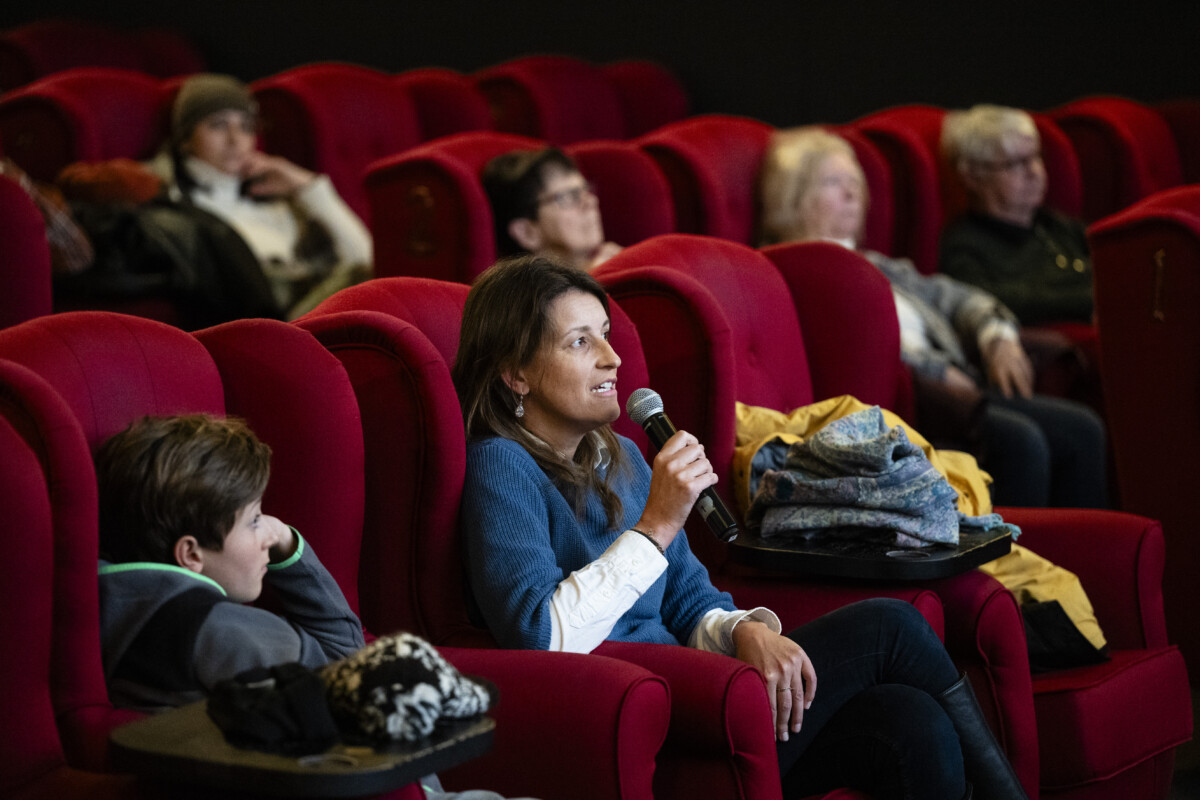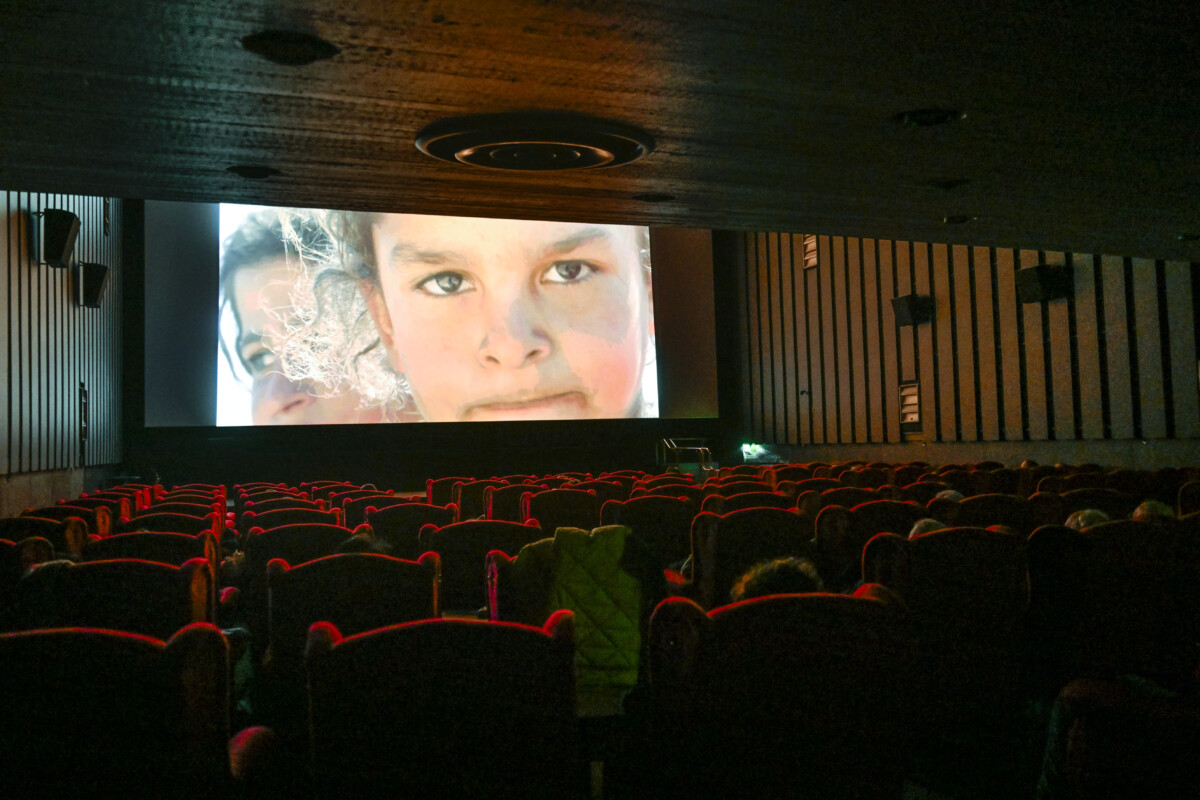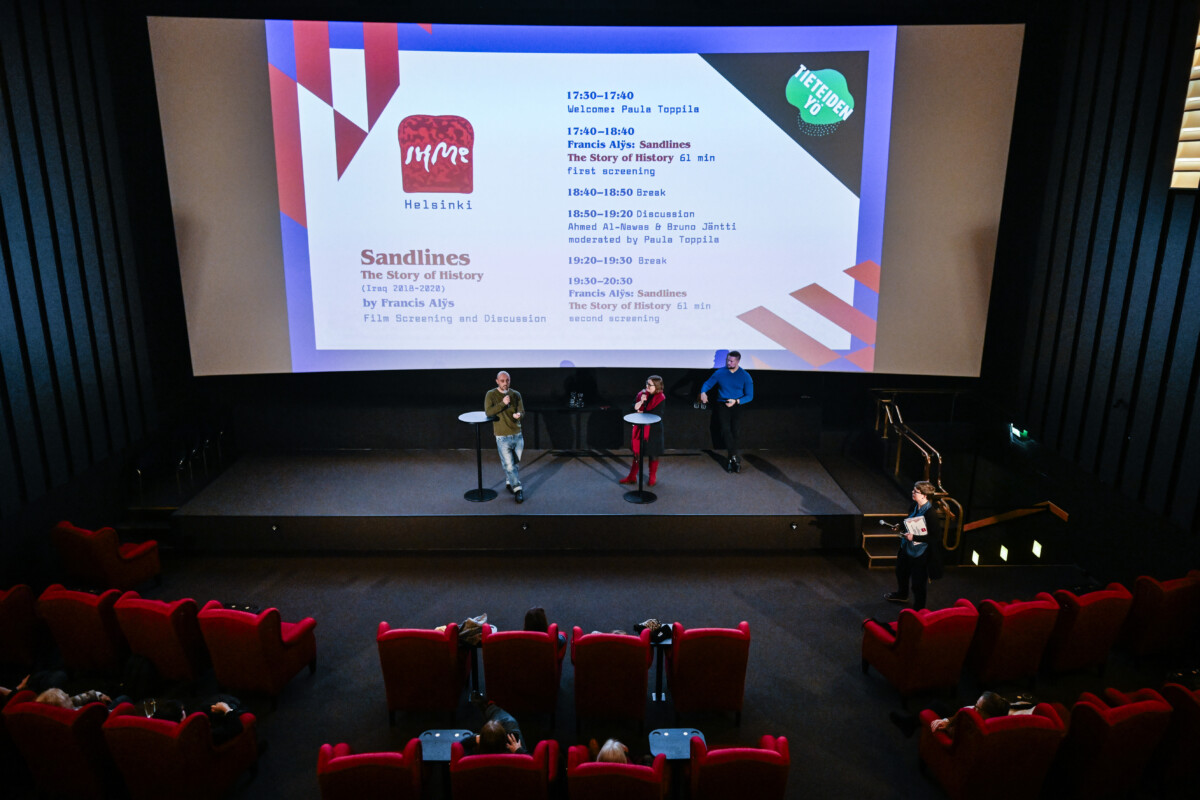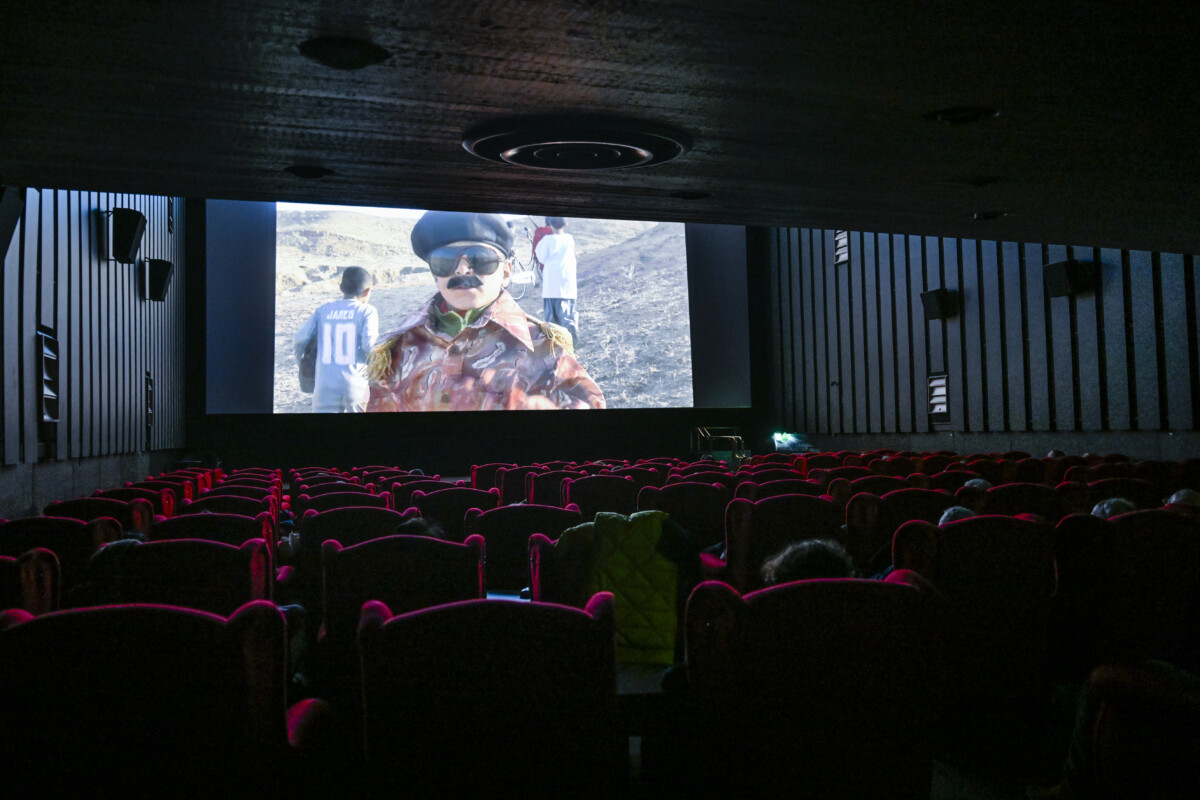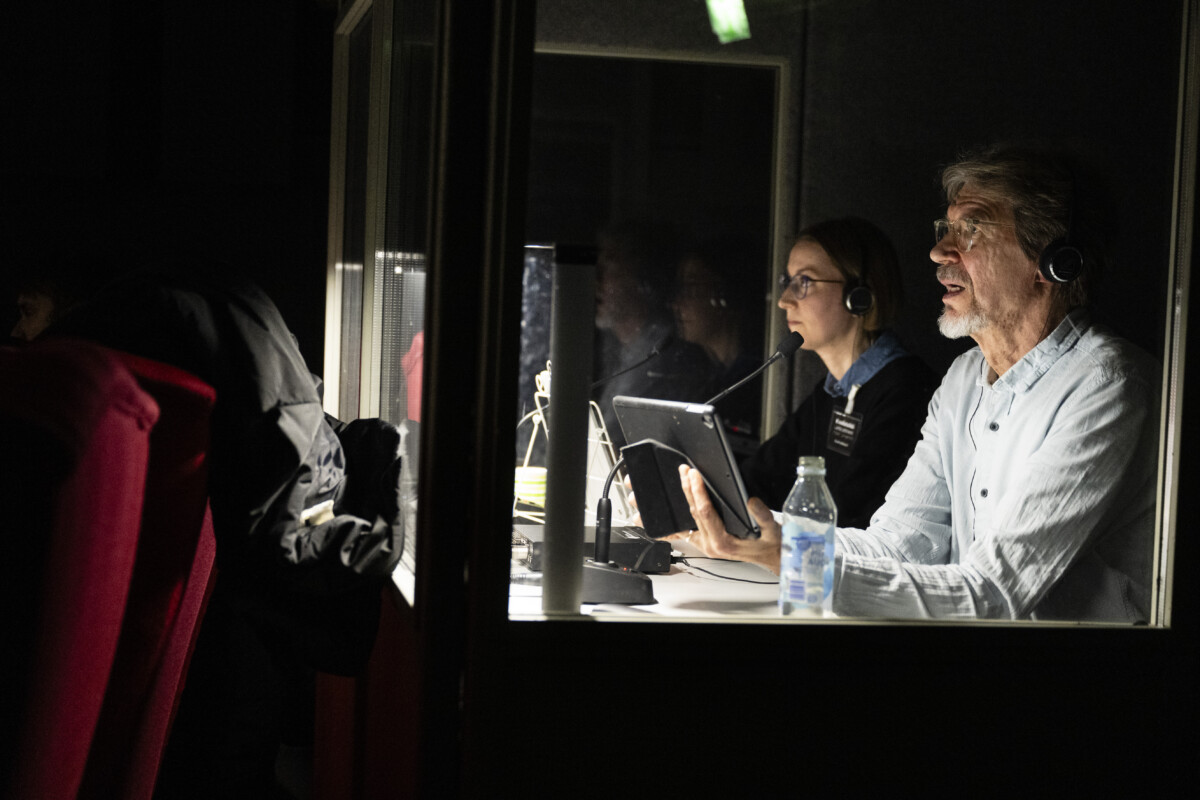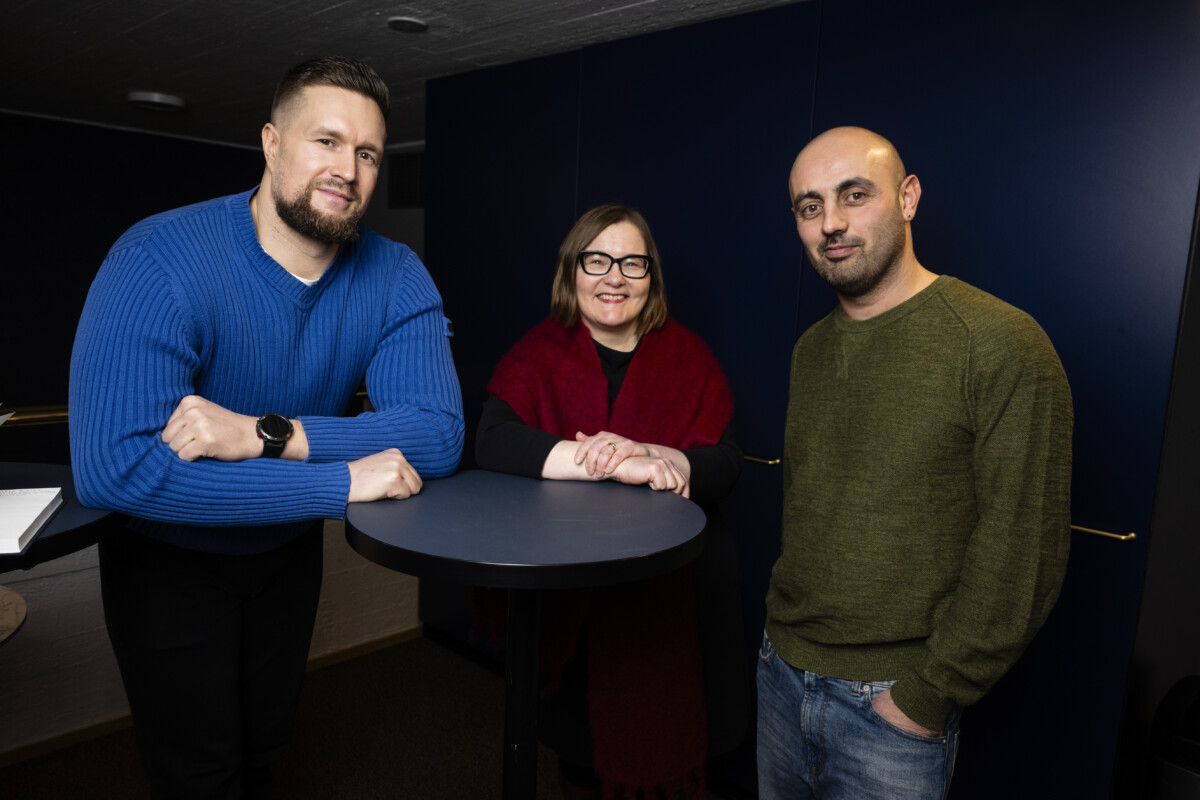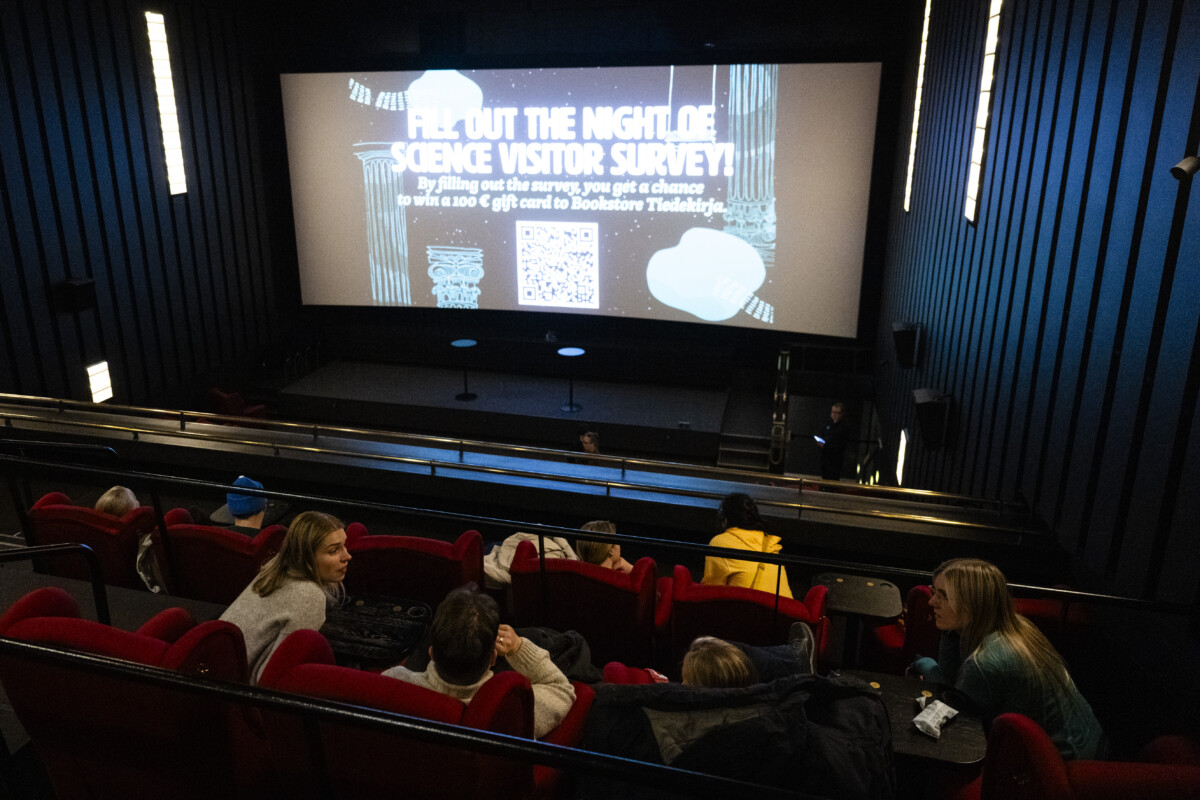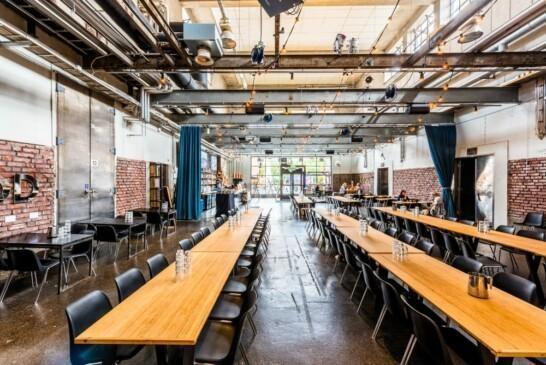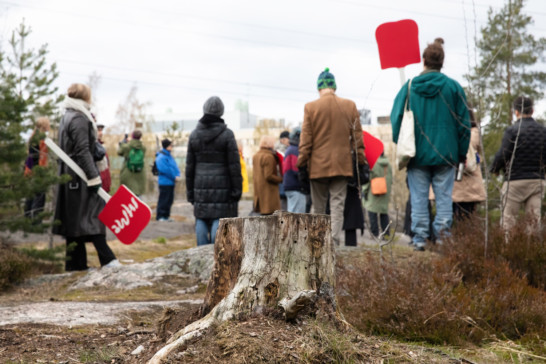News
IHME Helsinki at the Night of Science
The History and Present of Iraq
IHME Helsinki promotes eco-social education by holding events throughout the year, in addition to its annual production of an artwork. Participation in the Night of the Science has become an annual tradition for us, at which we bring artists and researchers together to discuss the cultural change needed in the environmental crisis. This year, on the Night of Science, the discussion focused on the history and present of Iraq. Our event attracted over a hundred interested viewers to Finnkino Maxim on January 25, 2024.
We showed Francis Alÿs’ film Sandlines, The Story of History and discussed it with artist and curator Ahmed Al-Nawas and doctoral researcher Bruno Jäntti. The discussion was moderated by IHME’s Executive Director and Curator Paula Toppila.
In the film, children from a mountain village near Mosul reenact the history of Iraq over a hundred years. The events in the film start in 1916 with the secret Sykes-Picot Agreement and end in 2016 with the reign of terror of the Islamic State.
In the film, children and village animals reenact key events through play. Francis Alÿs and Julien Devaux co-directed the film, which was originally commissioned by the Iraqi Ruya Foundation.
During the discussion, Jäntti and Al-Nawas each gave a ten-minute commentary on the film. As a researcher on global politics, Jäntti approached the film from the perspective of the democratic aspirations of Iraqi citizens and the challenges of climate change. For artist Ahmed Al-Nawas, who was born in Iraq and raised in Finland, the film tells the story of the historical impossibility of Iraq becoming a nation-state.

For Jäntti, the children in the film represented the Iraqi citizens who have always been marginalized by the country’s political system. Climate change poses a threat to Iraq, and the poor domestic political situation complicates responses and mitigation efforts. Extreme heat, water shortages, drought and sandstorms are expected to exacerbate conflicts in the region.
Nevertheless, Jäntti highlighted Iraq’s long history of citizen activism fighting for democracy. The Iraqi people themselves want democracy and a different political system than has been imposed on them through repeated conflicts, but is anyone listening to them or supporting them?
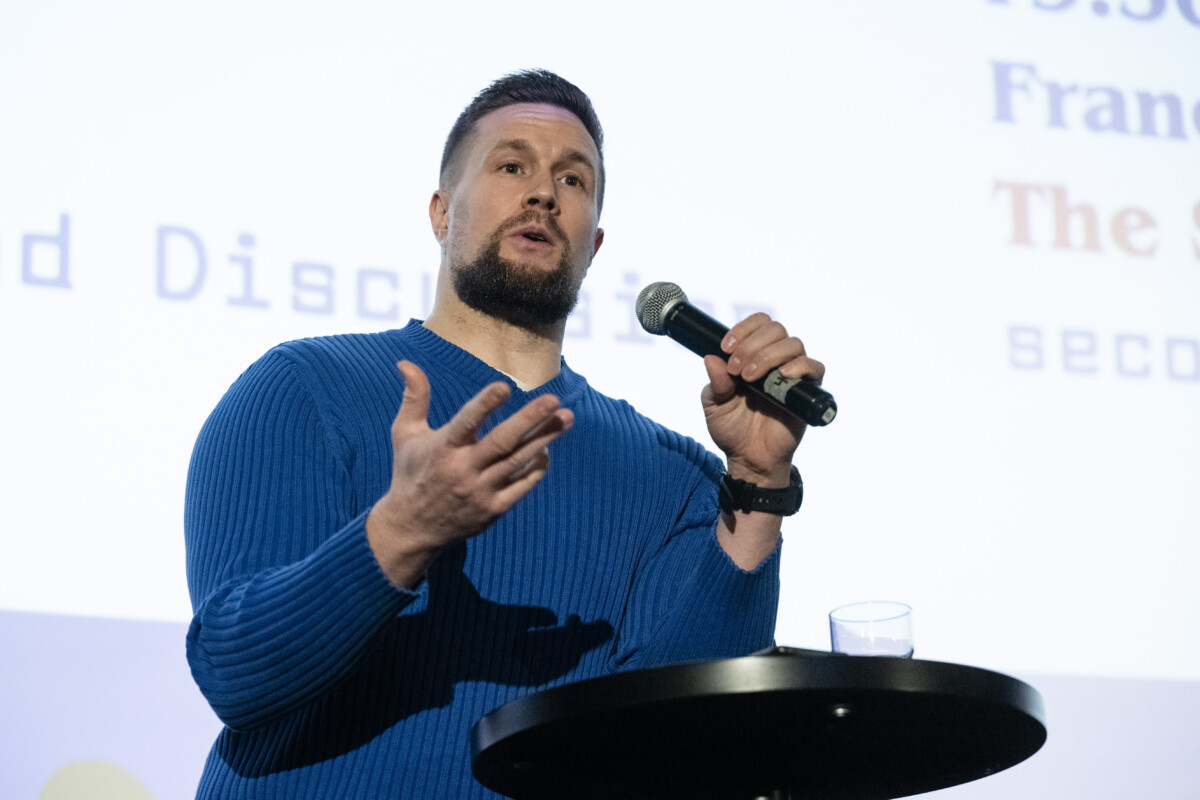
Ahmed Al-Nawas sees the film as repeating the common narrative of Iraq as a victim of its geographical location and geopolitical circumstances, although the Middle East and the country are altogether much more complex. Al-Nawas noted that a nation-state is always a social construct requiring a narrative for it to be created, but in Iraq there is a constant battle over who gets to tell and shape that narrative.
To Al-Nawas, the fact that for the children in the film their own village is the country they know served as an example of how in Iraq history has been deliberately obscured, destroyed, and manipulated. He also pointed out that the climate is not currently a priority for ordinary people, whereas achieving societal stability is.

Jäntti, for his part, raised the potential of European civil society to pressure the EU to play a more constructive role in supporting and carrying out the Iraqi people’s own aspirations and preferences. This could have a major impact on Iraq’s adaptation to climate change and on reducing its effects.
The film sparked discussion of major, complex issues, which continued in lobby conversations after the screening. The diversity of opinions and the variety of audience reactions were very evident in the feedback. Some people experienced strong emotions and found humour and beauty in the children and animals, while others thought about the ethical questions involved in working with children. The discussion also kindled interest in the region’s history.
